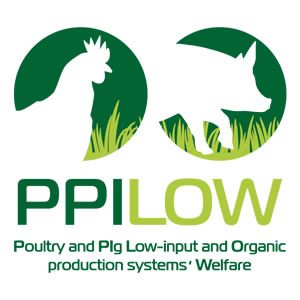6.1.2 – Consequences of range use on multiperformance
Organic production systems include access to free range areas to promote the expression of natural behaviors, i.e. free movement, grazing and foraging on the ground. These behaviors can promote feed intake in the field, but at the same time locomotor activity when birds are exploring the range is a source of energy expenditure. More generally, the relationship between range use and metabolism, welfare including health, growth performance and meat quality needs to be better understood. By studying four different genetic lines, we reported a negative trade-off between higher levels of range use and productive performance (growth rate, carcass weight or yield). There was no evidence of a trade-off between range use and welfare indicators measured at slaughter, such as pododermatites and hock burns, while a positive effect of higher range use was seen for bone health, at least in the medium growing genotype. In this type of bird, higher range use is also associated with variation in meat quality (ultimate pH, color), suggesting that exercise depletes muscle glycogen reserves and improves muscle vascularization, and that foraging favors the intake of grass containing coloring carotenoids. Increased physical activity in medium-growth, high-yielding birds may impair their redox status and affect antimicrobial defense.
Papers
- Performance, meat quality and blood parameters in four strains of organic broilers differ according to range use; Bonnefous C., Collin A. et al. 25 July 2023, Preprint available at Research Square

